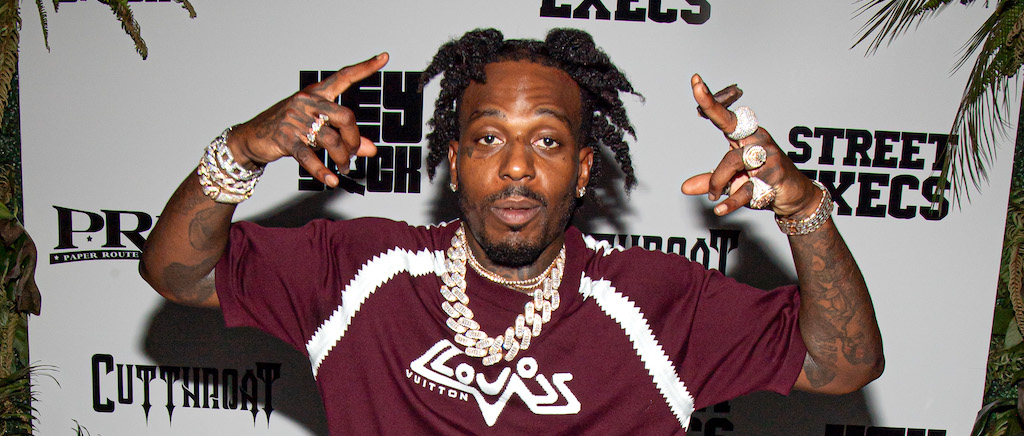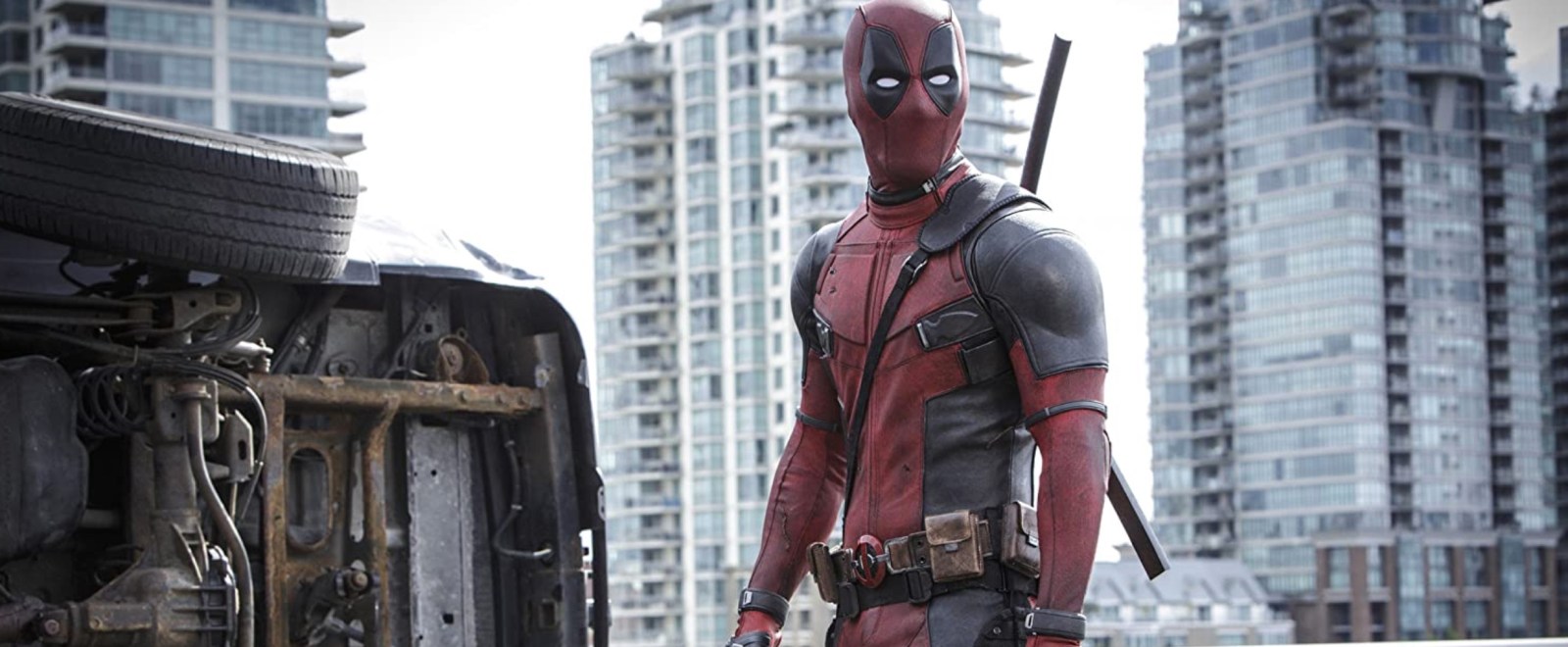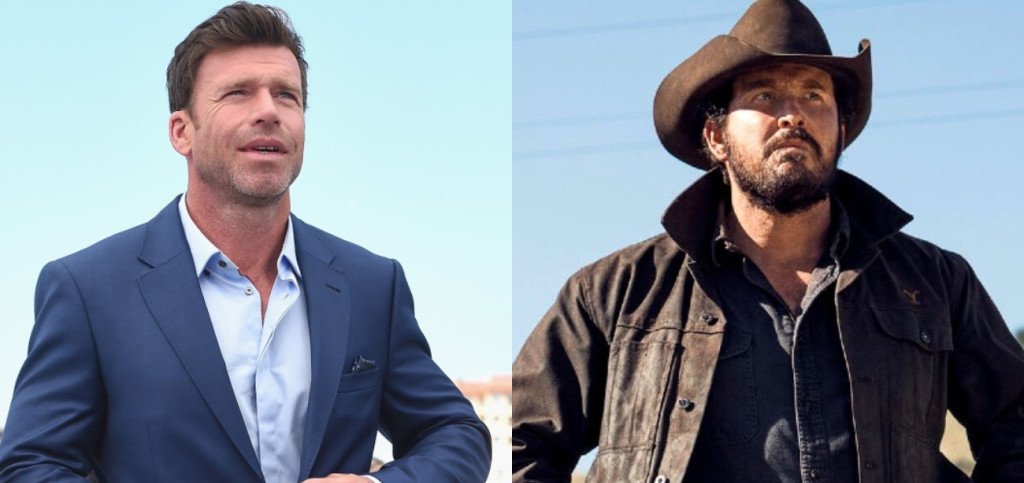
As it turned out, 2023 was a pretty good year for movies. (Insert Larry David “pret-tay, pret-tay, pret-tay good” GIF here.) So good, in fact, that we had a difficult time choosing just ten favorites, as we’ve done most years. This year we ended up with multiple films tied for the 10th spot, so we decided to expand the list to 15. But then Mission: Impossible — Dead Reckoning was gonna miss the cut by one vote, so we decided to expand the list to 16 movies. After all, if Tom Cruise was willing to die for us to save movies, his 2023 summer blockbuster deserved a spot on our list. So here was are.
Here’s how the voting was tabulated (yay math!). Editors, writers, and contributors submitted lists of their favorite movies from 2023 and then we assigned points based on these rankings. (Ten points for the number one movie, nine points for the number two movie, and so on.) We added up all of those numbers to formulate a score. Ties were broken by favoring whichever movie was ranked highest on the various lists that were submitted. Confused? Perfect! This time is year is meant to be somewhat confusing for everyone.
So, without any further hoopla, here are the movies we think were the best of 2023.
16. Mission: Impossible — Dead Reckoning Part One
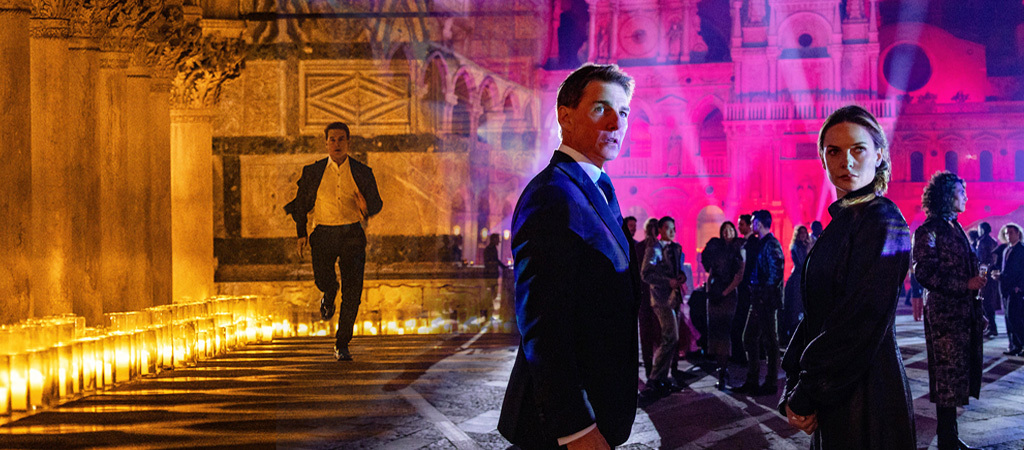
Tom Cruise has been making Mission: Impossible movies for almost 30 years now and all they’ve ever done is rule extremely hard. Dead Reckoning — Part One is no exception. This sucker is just wall-to-wall action for almost three hours, with all-knowing artificial intelligence and car chase and train chases and exploding submarines. Hayley Atwell plays a pickpocket. Vanessa Kirby returns as the White Widow and holds a techno rave in a castle where there’s also a black market transaction taking place. Tom Cruise runs and jumps and flings himself off of and into things for our enjoyment, as always. Just a big and loud summer blockbuster in all the ways a big and loud summer blockbuster should be. There’s room for those, too. — Brian Grubb
15. Fallen Leaves

Finnish director Aki Kaurismäki has been making dry, deeply humane movies since the 1980s and his latest is one of his best. In Helsinki, Ansa (Alma Pöysti) and Holappa (Jussi Vatanen) each live on the economic margins of an uncaring city. Over the course of the film they find and lose each other then find each other again, though whether or not they can forge a relationship deeper than chance encounters remains unclear. The leads deliver perfectly deadpan performances that never obscure their characters’ stirring hopes that, in each other, they might have found a way to end the loneliness and disappointment that’s defined their lives. (A bonus: it features the year’s best canine performance.) — Keith Phipps
14. Creed III
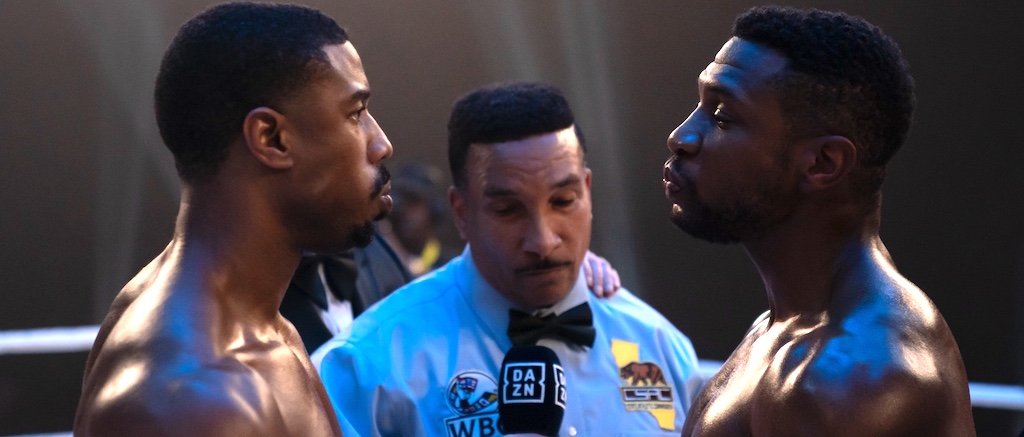
Nine movies into the Rocky franchise and somehow, Michael B. Jordan’s directorial debut manages to give one of the greatest sports stories on screen a thrilling refresh. Creed III turns the underdog trope that fueled its predecessors on its head, showing Adonis (Jordan) as a titan in the boxing world whose idyllic life is thrown into chaos when a familiar face from his past – a menacing and muscled Jonathan Majors — pops up with title ambitions of his own and a bitter score to settle. It’s Adonis’ fall from grace, and his gritty determination to get back into the ring, that drives the narrative to new heights as themes of family and brotherhood take priority over the brutality that happens once the bell rings. But those invested in the action of this series won’t be disappointed either. Jordan’s love of anime is infused in every punch, jab, and knockout blow of the film’s final fight – a dizzying, vicious dance peppered with slo-mo close-ups and visceral sound effects that make a case for why this might be the best boxing movie since Sylvester Stallone’s original outing. — Jessica Toomer
13. John Wick 4

The John Wick universe is a complex blend of gun violence, vague religious imagery, and some of the best dog actors around, and the fourth installment brought the action to a new level by adding in a Skarsgard brother. You’d think the rogue assassin bit would be overdone by now, but Keanu Reeves managing to successfully pull off a meaningful 3-hour performance as John Wick with just 380 words is so mesmerizing that we could get another two or three movies out of this franchise with just a single paragraph go dialogue. John Wick 4 is supposed to be the final chapter in the series, but Reeves can seemingly never resist bringing his characters back, so we might see more of him soon. And we don’t ever have to talk about The Continental again. — Nina Braca
12. Saltburn

Emerald Fennell burst onto the scene with 2020’s divisive Promising Young Woman, and her follow-up, Saltburn, is a searing riff on class that feels like The Talented Mr. Ripley for sickos. Barry Keoghan stars as Oliver, an Oxford scholarship student who becomes obsessed with his handsome, rich classmate Felix (Jacob Elordi). Felix invites Oli back to his family’s estate, Saltburn, for the summer, but what he doesn’t realize is that rescinding that invitation could be dangerous. Saltburn is a mean little dark comedy that encourages the audience to root for a monstrous protagonist. Keoghan has really perfected the art of playing a wolf in sheep’s clothing in films like American Animals and The Killing of a Sacred Deer, but Oliver might be his most stellar sociopath yet. Combined with a killer soundtrack, hilarious supporting cast, and truly sumptuous visuals, Saltburn is a delicious cinematic schadenfreude. — Danielle Ryan
11. They Cloned Tyrone

Juel Taylor’s directorial debut is a stylish genre pastiche that feels like the sharp, satirical needle hiding in the hit-and-miss haystack that was Netflix’s original content lineup in 2023. A one-pot dinner filled with mind-bending sci-fi, Blaxpoitation references, Nancy Drew homages, and 70s-era funk, Taylor lets his tale of a Black neighborhood under siege simmer in its opening half. We meet John Boyega’s drug-dealing anti-hero Fontaine under the most unusual of circumstances – just before he’s killed in a drive-by and thrust into a Groundhog Day-style time-loop. To get to the bottom of the secret government conspiracy responsible, he reluctantly recruits a quick-witted pimp named Slick Charles (Jamie Foxx at this comedic best) and his streetwise employee Yo-Yo (Teyonah Parris serving up a surprise breakout performance). The trio’s chemistry sells all of the wild, riotous action to come as they Scooby Doo gang their way through tainted fried chicken recipes, grape drink communions, and toxic hair relaxers in an effort to free their community and define their identity on their terms. — Jessica Toomer
10. Beau Is Afraid

Beau is Afraid is a grand horrific adventure, filtered through the twisted mind of writer and director Ari Aster. Joaquin Phoenix stars as Beau, whose journey home after his mother’s death is as epic as the mythical Odysseus, traversing a dystopian city, a sickly sweet suburbia, a magical forest, and more in the name of getting back to his mother dearest (Patti LuPone). Beau’s somewhat Oedipal odyssey forces the mild-mannered, cowardly man to confront his greatest fears both literal and metaphorical in some strange ways (seriously, there’s a giant penis monster in an attic), and it’s the kind of surrealist nightmare many horror fans could only dream of. The less you know about Beau is Afraid before going in, the better, because there’s no movie as unique or surprising this year. — Danielle Ryan
9. Bottoms

Bottoms is two things at once, which is a fun little trick. One on hand, it’s a fun and sweet little coming-of-age comedy about two teenage girls who kind of accidentally start a fight club as a ploy to get the attention of the cheerleaders they have crushes on. On the other hand, it’s also just delightfully weird, with football players in cages and battle royales and Marshawn Lynch as a profane teacher who sometimes reads adult magazines in class. The main thing Bottoms is, though, is a blast, from beginning to end. Ayo Edebiri is an absolute star, and the creative team of Rachel Sennott (who plays the other lead) and Emma Seligman (who directs) ain’t exactly slouches either. — Brian Grubb
8. Past Lives

Past Lives has the best ending for a movie this year. The rest of the film isn’t so shabby, either. Celine Song’s stunning directorial debut follows Nora Moon (played as an adult by an Oscar-worthy Greta Lee) and Hae Sung (Teo Yoo), two childhood sweethearts who lose touch when her family moves to North America. Years go by, and after spurts of on- and off-again communication, Hae Sung travels to New York City to meet Nora — and her husband, Arthur (John Magaro). A lesser film would have turned Hae Sung or Arthur into a villain for keeping Nora away from who she’s “supposed” to be with, but Song’s script is more complex — which is to say, more human — than that. “I didn’t know that liking your husband would hurt this much,” Hae Sung tells Nora following a night out with both of them. By the final scene, you’ll be crying along with Nora. — Josh Kurp
7. No Hard Feelings

Sure, Jennifer Lawrence has those Oscar movies under her belt, but is this my favorite JLaw movie? It’s a pretty close call. In this profanely delightful little ditty, she pulls out every available stop for laughs (with an Eastern Promises-style nude scene and everything) and truly looked like she was having the time of her life as a fail-hard character who agrees to boink an unsociable 19-year-old in exchange for a car. Surely, that’s a more enjoyable movie to film than a Battle Royale-esque franchise or the most gut-wrenching Winter’s Bone scene (no contest). What’s even better is that No Hard Feelings actually transforms into a sweet movie without turning saccharine (that Hall & Oates piano scene, dang), but the movie wisely never downshifts on the raunch factor. Long live the filthy movies. — Kimberly Ricci
6. The Holdovers

The other night I had dinner with a friend who saw The Holdovers and it quickly became one of their favorite movies of the year. What’s interesting is he said he was shocked by how good it is, even though he went in expecting it to be good. I asked if he was shocked by the actual plot. He said no, it’s about what he expected – the only contributor to his shock being how much better the movie was than even his already high expectations. Alexander Payne is extremely good at making “hangout” movies. This time, about a teacher (Paul Giamatti); a charming, yet sarcastic and forlorn student (Dominic Sessa); and the head cook at the school (Da’Vine Joy Randolph, who may very well be on her way to an Oscar) all trapped together during the holiday break with nowhere to go.
Payne’s last collaboration with Paul Giamatti, Sideways, is also low on plot and very high on character. Think about how many times you might watch a first act of a movie, fall in love with the dialogue and the characters, and just want to spend time with them … then the plot kicks in and everything that was great starts to fall apart. Payne is a master of creating characters and dialogue that just keeps us invested in them. Notably, his prior film before The Holdovers, Downsizing, was very heavy on plot and it’s his most poorly reviewed film. When you ask him, he poo-poos the idea The Holdovers is a return to basics for him, but even if he doesn’t feel that way, it doesn’t change the fact that it is a return to basics for him with just a stellar cast of people I wish we could spend a couple more hours with – or, frankly, an entire holiday season with. — Mike Ryan
5. Spider-Man: Across The Spider-Verse

Comic book movies and TV shows are showing the strains of their ceaseless expansion as we sit through increasingly familiar stories, CG cityscapes, and alien worlds. Too much of a good thing, not enough great things. But Spider-Man: Across The Spider-Verse is a great thing. Heartful in its efforts to tell the story of the continuing adventures of Miles Morales as he navigates life as a hero absent the friends he made in the first film, Across The Spider-Verse truly explodes the idea of what a comic book movie can be. This is thanks to the boundlessly exuberant and adventurous way it both constructs and captures its world(s) during this jaunt through the multiverse, perfectly amalgamating the best parts of movies, animation/anime, video games, comic books, and art. — Jason Tabrys
4. Killers of the Flower Moon

David Grann’s 2017 book Killers of the Flower Moon revisited the essentially forgotten story of the Osage Murders in which sixty or so members of Osage tribe in Oklahoma were murdered by those seeking to take over the mineral rights that had made them rich when oil was found on what was thought to be worthless land that they owned. Martin Scorsese’s adaptation doesn’t merely dust off the story, it treats it as an epic tale of the prejudice and injustice we try to cover up when telling the American story. Bringing together Scorsese’s two most famous leading men, the film stars Robert De Niro as local baron William Hale and Leonardo DiCaprio as his craven, none-too-bright nephew Ernest. More than holding her own, Lily Gladstone provides the soulful counterweight to the amorality of those who see her and those like her less as humans than resources to be exploited and discarded when used up. — Keith Phipps
3. May December

It’s interesting May December very well might wind up being Todd Haynes’ most watched and most lauded film. (Though, it’s hard to quantify. Carol will make more money at the box office but, at least anecdotally, everyone seems to be watching May December now that it’s on Netflix.) Also interesting is the amount of people under the age of 30 who have no idea May December is not only loosely based on the life story of Mary Kay Letourneau and Vili Fualaau, but who have no idea who Letourneau even is – a name that was impossible to avoid if you were a sentient being during the 1990s. Natalie Portman plays a mediocre actor named Elizabeth who is staying with Julianne Moore’s Gracie in an effort to study her for an upcoming role. Of course, this is still a Todd Haynes film so a lot of, let’s say, interesting and weird things happen during this stay. Most notable, the relationship between Elizabeth and Gracie’s husband, Joe (Charles Melton, who seems like he’s the current frontrunner for a Best Supporting Actor Oscar). Oh, and somehow this is a comedy. And I truly believe that Todd Haynes is the only director on this planet who could have successfully made this into a comedy. Or, for that matter, made this at all. — Mike Ryan
2. Oppenheimer

Unfolding across two timelines at once—this is a Christopher Nolan movie, after all—this biopic of J. Robert Oppenheimer (Cillian Murphy) fully captures the burden shouldered by a brilliant man who carried nothing less than the fate of the world on his shoulders. As head of the Manhattan Project he brings a terrible weapon of destruction into the world, fully aware of the immediate consequences and the possibility that they’ll expand to global proportions. In its aftermath he sees his reputation and accomplishments smeared as a matter of political expediency. In lockstep with Murphy’s eerie, magnetic performance, Nolan’s film treats history as a series of events colliding in increasing intensity, creating aftershocks we still feel today and threats that can be forgotten but never escaped. — Keith Phipps
1. Barbie

Greta Gerwig’s Barbie was the best thing to happen to the color pink since the introduction of Wednesdays. For a while, the color’s reputation was tainted by a bunch of Victoria’s Secret executives, and then taken over by the pop-rock singer of the same name, but this year Pink literally went with everything, thanks to Barbie. It’s no surprise that a movie that dominated the cultural conversation is the number one pick of the year, though it is a huge relief that a movie so hyped-up and heavily marketed was actually a surprisingly introspective take on the effects the patriarchy has on everyone (with dazzling disco moves choreographed to a bespoke song). Margot Robbie’s portrayal of the slightly naive stereotypical Barbie trying to understand the “Real World” of Los Angeles is a realistic callback to whenever the first time you felt crushed under various social pressures. Welcome to the real world! It’s hard out there, even for a fake doll. Throw in Billie Eilish’s melancholic tear-jerker “What Was I Made For?” and an intentionally butchered pronunciation of The Godfather and the movie was bound to be an instant classic. And you, too, have the power to take your Birkenstocks out of the closet in 2024. — Nina Braca



